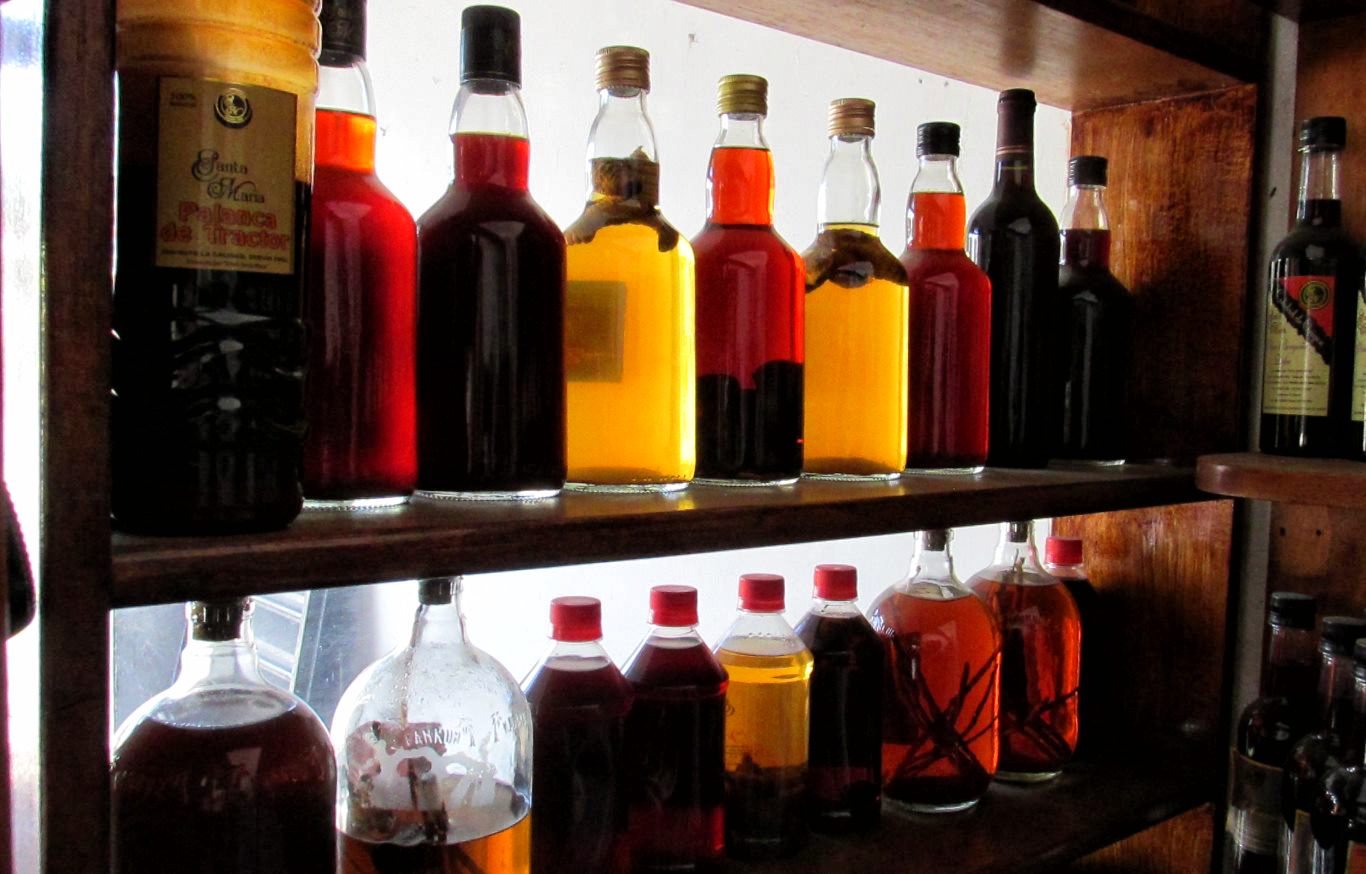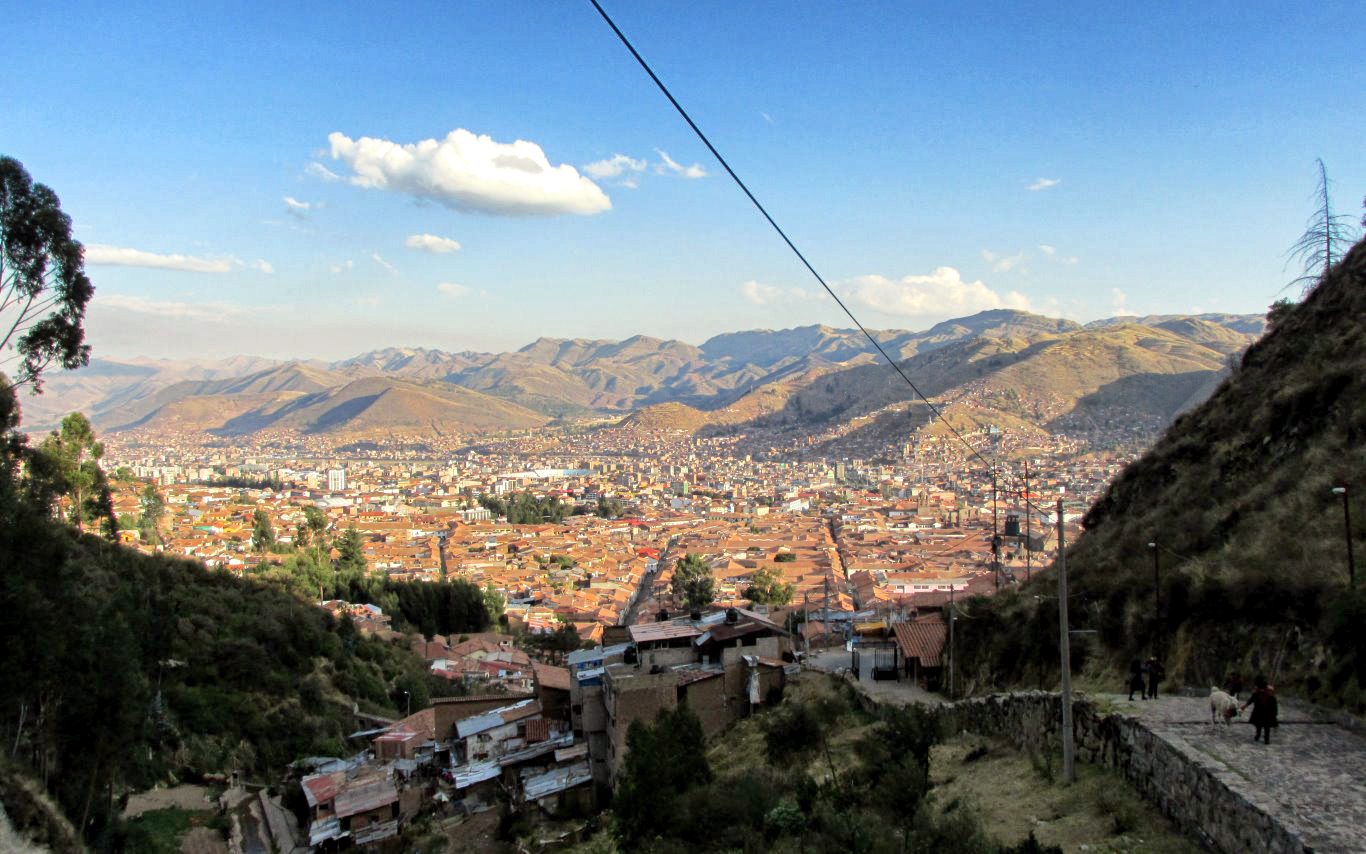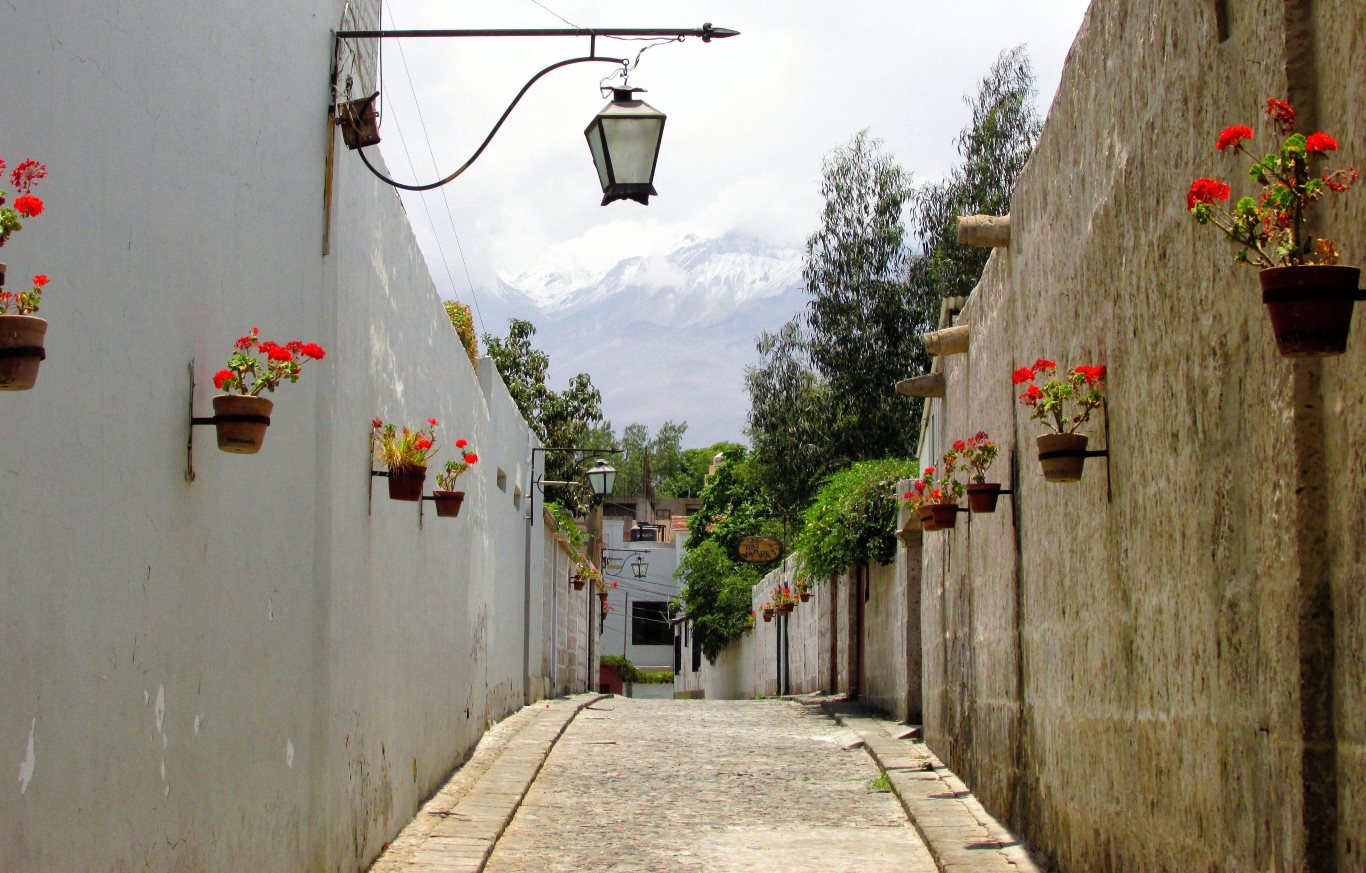The view from Kuelap Fortress near Chachapoyas. One of many reasons to explore the less-visited north of Peru. Photo by Tony Dunnell.
Peru is an endlessly fascinating country, with so much to see and do, eat and drink, with ups and downs, plenty of laughs and… occasionally… some weighty frowns.
As someone who has lived in — and written about — Peru since 2009, I’ve had my fair share of experiences. So for all you first-time travelers to the land of the Incas, here’s my selection of things to know before you go to Peru — stuff that will help you get the most out of your trip.
If you have anything to add, or if you have any questions, feel free to add a comment in the comments section below. And for basic travel preparation tips, read 25 Practical Things to Do Before Traveling to Peru. Happy travels!
Give Lima a Chance
Lima is worth a few days (read my Lima travel guide if you need more convincing). Seriously, people gripe and groan about Lima all the time, but it’s an interesting city (I wouldn’t want to live there, but I always enjoy going back to Lima for a week or so). So when you’re figuring out your itinerary, don’t treat the Peruvian capital as nothing more than a landing pad for onward travel to Arequipa and Cusco. Stick around for a few days and explore Lima’s amazing restaurants, impressive architecture, endless cultural quirks and burgeoning concert and festival scene. Just try not to get run over (treat this little nugget as a bonus tip: Everyone in Lima wants to run you over).
Peru’s Electric Boogaloo
The electricity in Peru might be different from what you’re used to, so before you plug in your hair straighteners, read about electricity and plug sockets in Peru. A lot of modern devices, including laptops and smartphones (and their respective battery chargers) are designed to work at both 110 and 220 volts, in which case you’re fine.
Noisy Neighbors
Peruvians like to make noise, at parties, on buses, at home, everywhere. And Peruvians rarely complain about people making noise. If you’re a light sleeper, bring earplugs. If you’re a bitter, cantankerous, argumentative noise-hater, bring the appropriate medication.
Three Countries in One
Peru is like three different countries in one, so try to travel along the coast, in the highlands, and in the jungle. It’s not just the weather that changes as you move between Peru’s three major geographic regions (and the weather can change a lot, so pack for Peru with that in mind). The food, the accents, the lifestyle, the culture, even the appearance and style of dress all change as you move from the costa to the sierra to the selva. It’s one of the reasons Peru never gets boring.
Go North!
Nearly all tourists travel in the southern half of Peru, rarely venturing north of Lima. So if you want to get off the well-trodden Gringo Trail, head north! There are plenty of reasons to explore northern Peru: great food, loads of Indiana Jonesing in tombs and temples, and far fewer tourists to get in the way, to name just a few.
Peru’s Best Buses are Surprisingly Good
The long-distance buses in Peru are some of the best in the Americas. Stick with the best bus companies in Peru and avoid the cheaper options (which often aren’t safe) and you should have a positive on-the-buses experience.
Drink Like a Pro
Drink craft beer, good pisco, and Amazonian aphrodisiacs. Normal Peruvian beer (Pilsen, Cusqueña, Cristal) is refreshing but extremely boring, so treat yourself to an occasional glass or bottle of Peruvian craft beer (or cider), a market that has blossomed over the last three years. Cheap pisco smells like rotting vegetable matter, so try the good (expensive) stuff at least once (as well as a few classic pisco cocktails). As for the Amazonian aphrodisiacs, well, why not? They’re full of shamanic barks and natural remedies, they’re alcoholic, and they have sexually suggestive names. Perfect.
And in case you’re wondering: The legal drinking age in Peru is far more liberal than in the United States (but fairly standard, globally speaking).
Don’t Drink the Water
Don’t drink the water. Don’t. Drink. The. Water. Don’t drink the water! It won’t melt your face or anything, but the chances of getting a stomach bug or parasite or bacteria or radioactively-induced superpower are high if you drink the water in Peru. Drink beer instead.
Learn Some Spanish for Peru
Not many people speak English in Peru, at least not beyond the tour agencies and touristy restaurants. So do yourself a favor: Try to learn at least some basic Spanish before you travel. I know it’s boring, but it makes a world of difference once you arrive.
Smoke With Caution
Drugs are quite widely frowned upon in Peru, especially by the older generations, so don’t be too blasé with the pot smoking. The actual laws for marijuana possession in Peru are fairly liberal, but some locals don’t differentiate between cocaine and weed — it’s all just drugs — and they’ll get annoyed if you spark up near them. Just tread carefully… and with some respect.
Eat Weird Food in Peru
Peru is home to a wide range of strange dishes. Embrace the oddities and don’t shy away from trying some of the weirder foods in Peru.
Taxi Drivers Lie
Taxi drivers always try to rip you off. OK, maybe not all of them, but most of them, especially in the bigger cities. So always haggle with taxi drivers. As a rule of thumb, if they say S/ 10, offer S/ 7. Your bargaining power typically increases with your level of spoken Spanish. And you don’t need to tip taxi drivers unless they’re particularly helpful.
Ass Spoons
Peru is an excellent country for amusing product names, funny signs and poorly translated menus. So keep your eyes open and your camera ready. Because a photo of you at Machu Picchu probably won’t receive as many Likes or Retweets as a photo of a packet of Kraps crackers or a bag of Ass spoons…
The Lunchtime Menú
The Peruvian lunchtime menú is a real bargain. Among all my tips for traveling in Peru on a budget, making the most of the menú is one of the keystone pieces of advice. You’ll find these set-lunch options all over Peru, letting you fill up for as little as S/ 8 ($2.50), and sometimes less. But don’t go too cheap, as the menú can quickly turn from a budget traveler’s blessing to a Peruvian culinary blight.
Toilet Tactics
Carry toilet paper with you everywhere. Most public toilets in Peru don’t have toilet paper; if they do, it’s normally terrible stuff and you have to pay for it. Most public toilets also lack toilet seats, making a large wad of toilet paper even more essential.
Peru’s Light-Fingered Opportunists
Opportunistic theft is rife in Peru, so keep a firm grip on your gear and never, ever leave something unattended for even a second, especially in a public place like a café or restaurant. Of all the things to know before you go to Peru, please remember this one. Having something valuable stolen abroad can taint your whole opinion of a country and its people, so don’t give anyone an easy opportunity to ruin your day — or your holiday.
Be a Bookworm
Peru is a far more interesting place if you know a little about its history. The same can be said for anywhere in the world, it’s true, but Peru is particularly connected with its archaeology. And the amount of people who go to Machu Picchu without knowing what the hell Machu Picchu even is, well, that’s just depressing. Do yourself a favor and read a book like The Conquest of the Incas by John Hemming before, or while, you travel. Other books worth reading are Death in the Andes by Mario Vargas Llosa; Turn Right at Machu Picchu by Mark Adams; The Peru Reader; and Last Days of the Incas by Kim MacQuarrie.
Lima and Bieber
Check the concert listings before you go to Peru, as Lima attracts some major international acts these days. You never know, you might be able to catch your hero live in Lima. Like Justin Bieber. Or Anthrax.
Photo Bombs
Not all photos are free in Peru. Snap-happy travelers — especially in Cusco — will soon find out that those women in traditional dress leading colorful llamas around don’t just stroll the streets for nothing. If you ask to take their photo, they’ll tell you how much (normally a few soles) and strike a pose. If you take their photo without asking, they’ll still ask for a tip. They just might not be so friendly about it. I’ve had a woman ask for a tip after I took a photo of Cusco while walking down from Saqsayhuaman. She was about 100 yards away and just crept into the bottom of my photo. I said no, politely, because it was ridiculous. Her cute little child swore at me in Spanish as they walked away.
Easy-Access Peru
In most cases, tourists can enter Peru with just a valid passport and a simple tourist card, known as the Tarjeta Andina de Migraciones (TAM). And even the card is being phased out in favor of a simple digital version, making the process even easier.
The One-Way Ticket Problem
Arriving in Peru on a one-way ticket can cause problems if you don’t have proof of onward travel. Thankfully, there are a few handy ways of getting around the one-way ticket issue.
Book the Inca Trail Well in Advance
Always book the Inca Trail well in advance of your travel date, with one of the best Inca Trail tour operators. Ideally, six months ahead of time. The classic Inca Trail gets booked up months in advance, especially during high season, so don’t leave your booking too late and don’t go to Cusco expecting to find space on the Inca Trail. The alternative treks, on the other hand, can often be purchased at the last minute (sometimes at reduced prices).
Altitude Sickness
Altitude sickness can really ruin your trip, so treat it with the respect it deserves. Whenever possible, allow at least 24 hours to acclimatize when you arrive at a high altitude city or attraction in Peru.
Vegetarian Peru
Peru can be a tough place for vegetarians, but there are more and more vegetarian and vegan restaurants opening up all the time, especially in touristy cities like Lima, Cusco and Arequipa. Look carefully and you’ll also find a few traditional Peruvian dishes that are suitable for vegetarians, so you don’t have to miss out on authentic Peruvian cuisine altogether.
Coca Tea Can Get You Fired
Coca tea is great stuff, but it can make you test positive for cocaine. If there’s any chance you might undergo a drug test in the weeks after returning home from Peru, it’s best to avoid coca tea and chewing coca leaves.
Expect Delays
Wherever you are in Peru, and whatever you might be doing, expect delays. Expect them, and accept them (to a certain extent). Stuff happens that you and everyone else simply can’t avoid: floods, landslides, earthquakes. Peruvians are also terrible with time i.e. they’re always late. But Peruvians are also resilient and tend to pick themselves up and get on with life, even in the face of hardship. So take the ups with the downs and try not to let delays and inefficiencies get under your skin; they’re all part of the experience.
Lima Airport to Miraflores for Cheap
Buses and shuttles now run from Lima Airport to Miraflores. Yep, no more overpriced taxis at the airport. Just hop on one of the new bus or shuttle services and save some soles for a pisco sour.
The Rise of Cheap Air Travel in Peru
Air travel is normally expensive in Peru, so don’t expect Peru’s domestic airlines to be as cheap as airlines in other developing countries. But keep an eye on Viva Air, a new budget airline operating in Peru. If you’re traveling light and don’t have much baggage to check, it could potentially be as cheap as taking the bus.
Small Soles
You’re better off carrying Peruvian soles rather than using US dollars in Peru, at least on a day-to-day basis. While plenty of tour operators, hotels, restaurants, transport companies and large stores accept dollars, many places don’t. Ideally, you’ll always be carrying a few soles notes; S/ 50 notes and smaller are best, as many businesses have a perpetual change shortage. You can easily withdraw dollars and soles from ATMs in Peru.
Getting Closer to the Sun
Sunburn is worse at high altitudes. Even on an overcast day in a high-altitude city like Puno or Cusco, you can still burn quickly. Carry a hat and use sunblock when you’re at altitude.
Tipping and Haggling
Peru isn’t a tipping nation, so don’t go crazy with tips. But sometimes a tip is expected. To avoid confusion, read my guide to tipping in Peru. Peru is a haggling nation, so don’t be afraid to negotiate, especially in traditional markets and souvenir stores.
Only Weirdos Eat Ceviche at Night
Only weirdoes eat ceviche at night. You can eat ceviche during daylight hours, but not once the sun sets. That’s the unofficial rule, anyway. It kind of makes sense, considering the fish is normally caught in the morning to sell at the markets, so isn’t nearly as fresh after dark. You can always eat one of the different types of ceviche, in which fish is replaced with anything from mushrooms to bulls testicles.
Peru Is Endless
You’ll never see enough of Peru. You’ll never see it all. I’ve been traveling around Peru since 2009, and I still have a never-ending list of things I want to see and do. So don’t try and pack in too much and rush through your trip. Take some time to let Peru wash over you. Slow down. You can always come back. And you’ll probably want to.
A pretty street in the Yanahuara neighborhood of Arequipa, with the mountains in the background. Photo by Tony Dunnell.











Tony, great, great information that many of your articles have. THANKS! I wanted to ask, IF you know Lima well enough to know where I can go for craft supplies, like leather, coconut buttons, precut gloves or soles for shoes, leather scraps. I have places in Medellin, where I go frequently and think surely there are some places in Lima I could buy. Appreciate the info!
Hi S.E. I’m sure there are places where you’ll find all that stuff in Lima, but I don’t know of anywhere specific to recommend. I’m not sure if there are places in Gamarra that would sell those items in among all the clothing and textiles stores. Otherwise you could ask in one of the craft/souvenir shops in Barranco, MIraflores or Central Lima. They might be able to send you in the right direction. Good luck! Tony.
love your blog. i am going back to peru for the second time in 1 year- it is truly an endless country!
Thanks Sara! Have a good trip!
Thank you, especially for the quick answer. I’m looking forward to reading those books. And maybe a movie can help me to get in the right “peruvian” mood as well. 🙂 I read, that the Fitzcarraldo was shot in Iquitos, but since it’s a bit oldy, it wasn’s so tempting (for me). But you made it more attractive, so I’ll give it a chance. 😉
Have a nice day.
Anna
Dear Tony,
We are traveling to Peru in two weeks and I already read a lot about the country, but I would really appreciate a few furthur book recommendations, like The Conquest of the Incas by John Hemmin.
Thank you in advance!
Best regards,
Anna
Hi Anna. That’s a great question! I need to write a separate post with book recommendations. But for now I’ve updated this post (see “Be a Bookworm” section above for links) to include some other suggestions: Death in the Andes by Mario Vargas Llosa; Turn Right at Machu Picchu by Mark Adams; The Peru Reader; and Last Days of the Incas by Kim MacQuarrie. If you’ve read all those and need some more suggestions, let me know. Thanks, Tony. (p.s. I need to make a list of films to watch too. If you’re going to the jungle at all, I highly recommend watching Fitzcarraldo — it’s a great and kind of crazy film!)